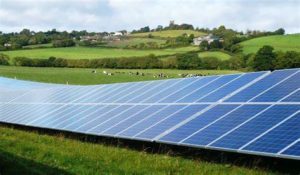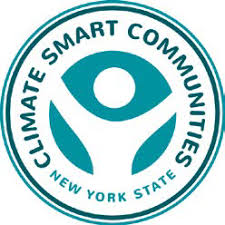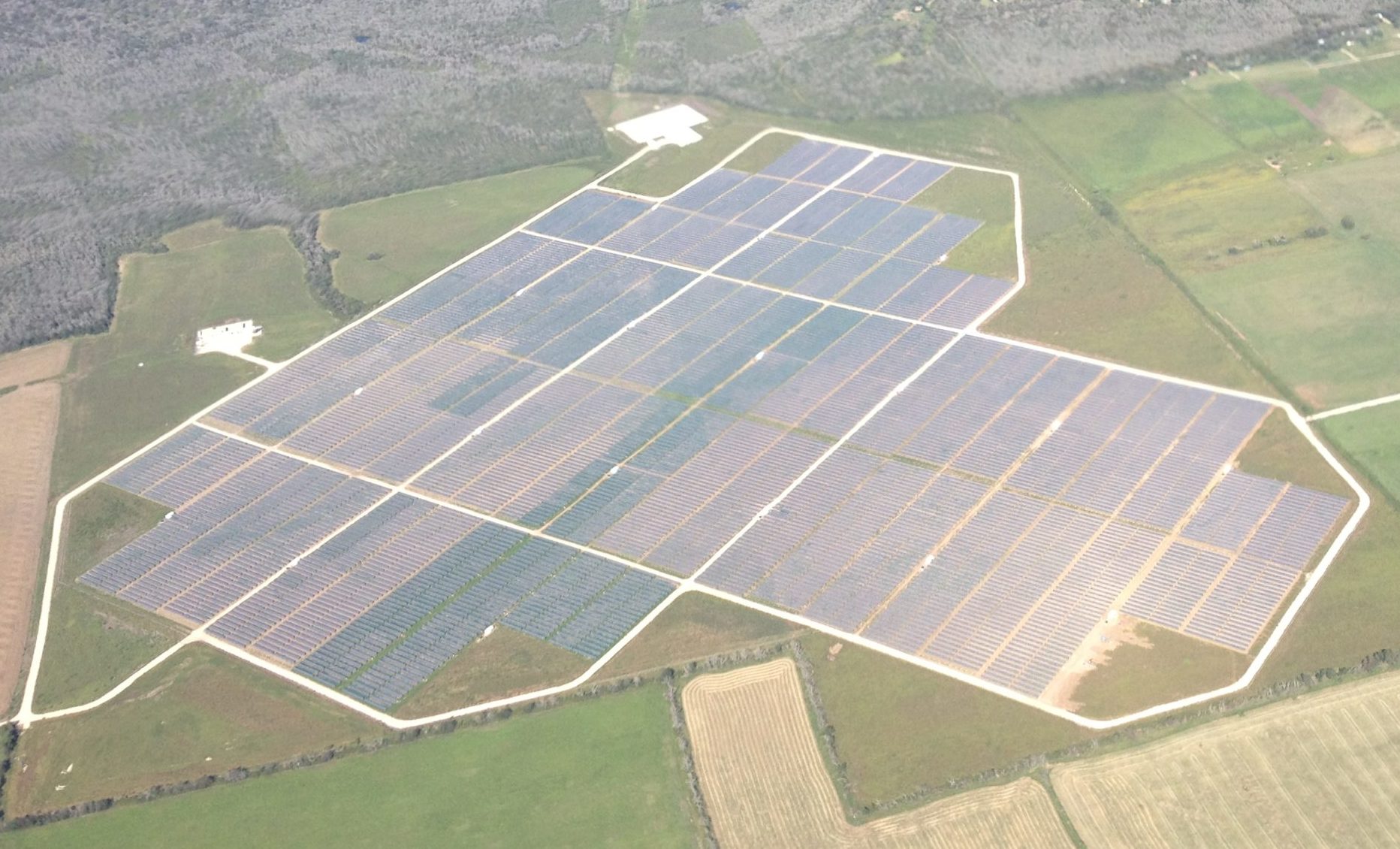Description
There are two strategies to encourage commercial-scale renewable energy installations in the Capital Region: zoning suitable land/large roofs for PV installations and zoning agricultural land so PV can be co-located. (The term “renewable energy” includes both equipment that generates and stores it.)
Zoning land and large buildings for renewables
Municipalities should identify suitable sites for PV and other renewable energy generation and storage, focusing on grid-scale installations (typically enough space for 1MW to 10MW). The sites should then be zoned so landowners/developers can more easily obtain permits and build renewable generation/storage projects on the sites.
- Targeting previously-disturbed land first, including rooftops of buildings with large footprints, large parking lots, mined lands, brownfields, and other previously developed land.
- Avoiding areas that would negatively impact important resources, such as wetlands, forests, and other important wildlife habitats.
- Avoiding important social areas such as historic and recreation areas.
- Targeting areas with high solar feasibility such as favorable topography, capacity, and access to transmission lines.
According to Scenic Hudson, issues that should be addressed when zoning for solar energy include:
- Proper height and setback requirements, to help reduce visual and other potential impacts.
- Minimum or maximum lot size, to control density and meet a community’s goals for total renewable energy development, based on the availability of eligible and suitable lands.
- Fencing requirements, including height and type, to reduce impacts to wildlife, promote security, and provide visual screening and noise attenuation.
- Buffer/screening requirements for visual and noise impact mitigation.
- Signage requirements and placement, for security and education.
- Undergrounding of on-site electrical interconnection and distribution lines.
- Vegetation removal/replacement and maintenance requirements, to reduce visual and other impacts of necessary infrastructure.
- Decommissioning plan requirements, to facilitate the land’s eventual return to other uses.
The projects earn revenue by supplying electricity for community solar projects, CCA, investor-owned utilities, or other entities. Larger scale systems have lower total project costs, especially when combined with clear development rights through zoning improvements.
Commercial-scale PV and renewable energy storage installations can be a revenue source for municipalities due to increased tax revenues.
They can also financially benefit residents directly. The NY Public Service Commission recently approved a Host Community Benefit Program that provides bill credits directly to residential electric customers in municipalities in which renewable energy facilities 25MW or larger are located.
Co-location of PV on agricultural land to support local farming
According to the National Renewable Energy Laboratory (NREL), “growing agricultural crops under the shade of solar panels uses water much more efficiently while shielding plants from the worst of the midday heat…. Preliminary results already suggest it can significantly boost the yields of certain plants in hotter-than-average years…. Solar energy generation also offers farmers a steady, additional source of income—a valuable assurance in a potentially volatile agriculture industry.”

1
2
Implementation Phases
Zoning brownfields and disturbed lands for renewable energy.
Zoning agricultural lands for PV co-location.
Challenges
According to the Farm and Energy Initiative, “without land use protections built into … permitting and approval processes, rapid solar development is likely to occur on agricultural land, as it generally provides easy conditions for construction and operation of a solar array: flat, sunny, large parcels.” Therefore, a challenge will be to enact suitable zoning laws to head off the loss of land used for agriculture. The Times Union article “Growth in solar power sparks a land rush: Developers scramble across Hudson Valley, Upstate to secure acreage for vast solar farms” documents this pressure on agricultural lands in the Capital Region.
Example Municipalities
Several municipalities have already implemented this action…
- San Antonio Texas has established itself as a utility-scale solar leader with 44.4 MW of utility-scale solar it currently has under contract (14.4 MW Duke Energy Blue Wing project; 30 MW in SunEdison projects) and the recent Memorandum of Understanding to develop an additional 400 MW of solar capacity and associated manufacturing facilities.
- Hartford Vermont in its desire to switch to renewable energy is adopting land use regulations that promote solar design in both the municipal and private sectors.
- Saratoga Springs New York, in coordination with the New York State Energy Research and Development Authority (NYSERDA) and Onyx Renewable Partners, transformed its old landfill site into a solar farm which is expected to meet approximately 40% of the municipalities electricity needs.
Greenhouse Gas (GHG) Reductions
Data
Area required for installing commercial PV for 10MW: 8.3 acres/MWa [Land-Use Requirements for Solar Power Plants in the United States]
Total capacity of solar roof top in zip 12054: 44.5 MW DC [Project Sunroof, by Google]
Total electricity that can be produced per year: 49000 MWh AC per year [Project Sunroof, by Google]
Assumptions
Assuming 5 plants are installed, each of 10 MW.
Methodology
We calculated the:
- Total area required for installing commercial PV for 5 plants.
- Total electricity that can be produced per year per rated MW DC.
- Total electricity that can be produced per year in Bethlehem when 50MW panels are installed.
- Total CO2e that is reduced per year in Bethlehem when 50MW panels are installed.
Result
10360 tons of CO2e is reduced per year in Bethlehem, NY when 5 plants of 10MW panels are installed
This results in LARGE GHG emissions reductions.

Climate Smart Communities (CSC) & Clean Energy Communities (CEC) Link
Municipalities can earn points toward CSC certification through a related CSC action: Prior to zoning suitable locations for renewable energy installations, it is recommended that municipalities complete a Renewable Energy Feasibility Study, which they can submit for 3-5 credits under CSC’s PE4: Renewable Energy Feasibility Studies Action.

Co-benefits
There are multiple co-benefits to completing this action, including:
- Preservation of local farms.
- Supports locally available produce.
- Reduces development costs and uncertainty for renewable developers.
Resources
Zoning land and large buildings for renewables
Scenic Hudson provides several resources that can be helpful in zoning for grid-scale PV projects, including an online GIS mapping tool covering the Capital Region that can be used to identify the most promising sites:
NYSERDA offers technical assistance to municipalities on enacting local solar laws.
EPA discusses re-powering for brownfields.
The U.S. Environmental Protection Agency offers the website RE-Powering America’s Land.
Co-location of renewables on agricultural land
The organization Fresh Energy offers the website The Center for Pollinators in Energy.
NREL offers resources to assist with the co-location of PV on agricultural lands. American Farmland Trust has studied this issue and offers a list of resources to assist with the co-location of PV on agricultural lands.
Quartz published the article Can farmland fix solar power’s real estate problem?
NREL details best practices in zoning for solar for state, local and tribal municipalities.
Cornell Study Considers Balance Between NY’s Solar Development And Farmland
NYSERDA & CDRPC webinar recording on including clean energy siting in municipal comprehensive plans.
https://www.scenichudson.org/wp-content/uploads/2019/10/renewables-siting-guide.pdf , p. 23
https://www.nrel.gov/news/features/2019/beneath-solar-panels-the-seeds-of-opportunity-sprout.html
https://farmlandinfo.org/publications/new-england-farmland-solar-policy-brief/ https://www.scenichudson.org/our-work/climate/renewable-energy/howtosolarnow/
https://www.scenichudson.org/wp-content/uploads/2020/11/solar-mapping-replication-guide.pdf
https://www.nrel.gov/state-local-tribal/blog/posts/best-practices-in-zoning-for-solar.html
https://ulstercountyny.gov/sites/default/files/documents/In%20Depth%20Polic
y%20Workshop%20Zoning%20for%20Solar%20Energy.pdf
https://www.epa.gov/re-powering
https://fresh-energy.org/beeslovesolar
https://www.nrel.gov/docs/fy20osti/76556.pdf
https://farmland.org/project/smart-solar-siting-partnership-project-for-new-england/
https://farmlandinfo.org/collections/?special_collections=3710
https://qz.com/1913868/why-agricultural-land-is-better-than-rooftops-for-solar-panels/
https://solsmart.org/solar-energy-a-toolkit-for-local-governments/planning-zoning-development/
https://www.nrel.gov/state-local-tribal/blog/posts/best-practices-in-zoning-for-solar.html
https://hyperionsystemsllc.com/projects
https://www.timesunion.com/news/article/Growth-in-solar-power-sparks-a-land-rush-16157376.php



